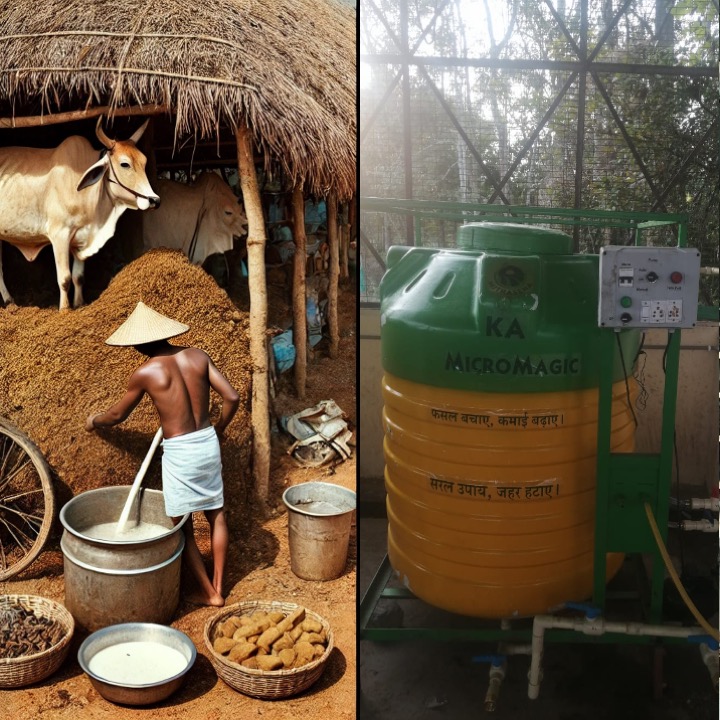
For generations, farmers have relied on traditional methods like Jeevamrut to enrich their soil and boost crop health. However, modern advancements have brought in more structured solutions like MicroMagic, which offers consistency and efficiency. Let’s compare these two approaches and understand which one makes more sense for farmers aiming for high efficiency and predictable results.
Jeevamrut is a traditional, homemade bio-fertilizer prepared using a mix of farm-based ingredients:
The mixture is kept in a shaded area, covered with a wet gunny bag, and stirred three times daily. It takes 4-5 days to ferment before it is ready for use.
MicroMagic offers a scientific and controlled fermentation-based bio-fertilizer approach. Unlike Jeevamrut, which requires individual farmers to prepare and maintain their own mix, MicroMagic enables a centralized low-cost fermentation unit for farmer groups.
| Approach | Cost per Liter | Effort Required | Quality & Consistency | Risk of Contamination |
|---|---|---|---|---|
| Jeevamrut | Rs. 6 – 8 | High | Inconsistent | High |
| MicroMagic | Rs. 15 | Low | Highly Consistent | Low |
While Jeevamrut appears to be the cheaper option at Rs. 6-8 per liter, the hidden costs of labor, inconsistency, and potential crop risks due to pathogen contamination must be considered. MicroMagic, at Rs. 15 per liter, may seem more expensive, but it eliminates labor, ensures superior quality, and delivers reliable performance, making it a smarter investment.
For farmers looking for a low-cost but effort-intensive solution, Jeevamrut may still be an option. However, for those who want hassle-free, high-quality, and consistent bio-fertilization, MicroMagic is the superior choice. By adopting modern fermentation techniques, farmers can ensure better soil health, higher yields, and long-term sustainability with minimal effort.
The future of farming lies in structured, scientific approaches, and MicroMagic paves the way for a more reliable and efficient way to nourish the soil.
There was this interesting discussion I had with Mr Prateek
The teaser of Self Running Soil Revolution for an investment
The effectiveness of any microbial product depends not just on
Mitrasena (Army of friends) is global brand of Biowall Agrihealth Pvt Ltd. Mitrasena products & protocols enables seamless transition to non-toxic farming by concurrently offering Excellent Protection, Higher Productivity & Profit and, Ease of use.
We are a DIPP recognized Startup working for non-toxic crop protection. We are driven by a highly passionate and professionally competent team.
MitraSena © 2025 | All rights reserved | Innovatively Designed and Built by Social Mukul Media
Have any query about bulk orders? Get in touch with us.